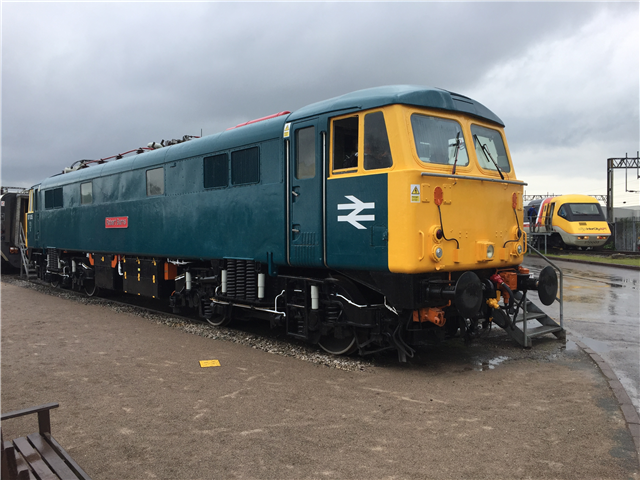The British Rail Class 87 is a type of electric locomotive designed and built by British Rail Engineering Limited (BREL) between 1973 and 1975. A total of thirty-six locomotives were constructed, to work passenger and freight services over the West Coast Main Line (WCML).
The type was developed in response to the need to add extra capacity to the electric traction fleet operated by British Rail (BR), in addition to the desire to introduce a higher performance electric locomotive than the existing Class 86, numerous aspects of which being incorporated into its design. The Class 87 fleet was operated as the flagships of British Rail's electric locomotive fleet until the late 1980s, at which point the Class 90, an improved derivative of the Class 87, started to come on stream.
As a consequence of the privatisation of British Rail during the mid 1990s, all but one of the Class 87s were transferred to Virgin Trains. Under this operator, the type continued their passenger duties until the advent of the new Class 390 Pendolinos, after which they were gradually transferred to other operators or withdrawn between 2002 and 2007. For a time, the type was a staple of electrified freight operations, before it was displaced by the Class 90 in this capacity as well. By the end of the 2010s, there was only one Class 87 that remained in an operational condition in Britain, 87002, which had been initially preserved by the AC Locomotive Group and is presently owned by Locomotive Services Limited. It was previously in use with Serco Caledonian Sleeper and is intended for use on charter services. A large proportion of the fleet has been exported to Bulgaria, where they have entered regular use once again.
